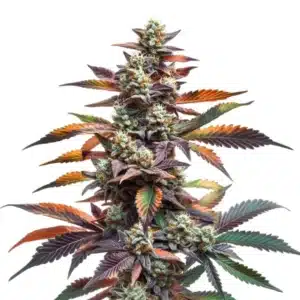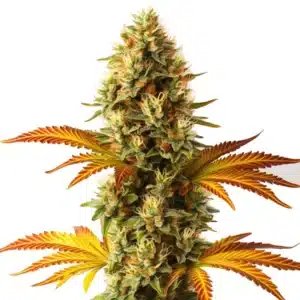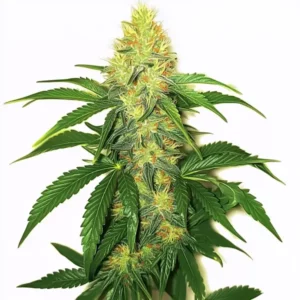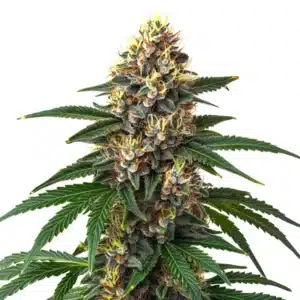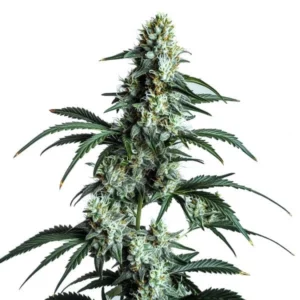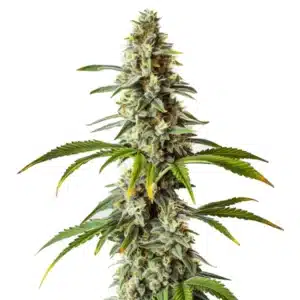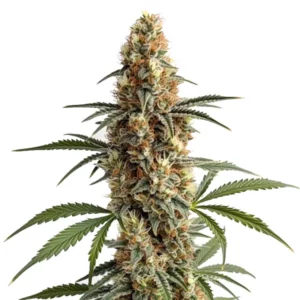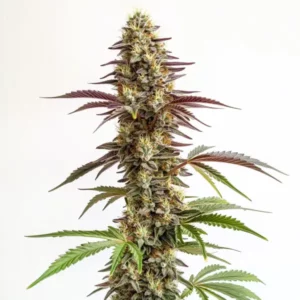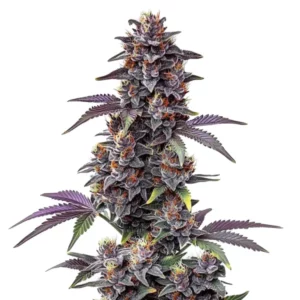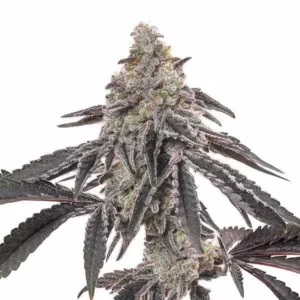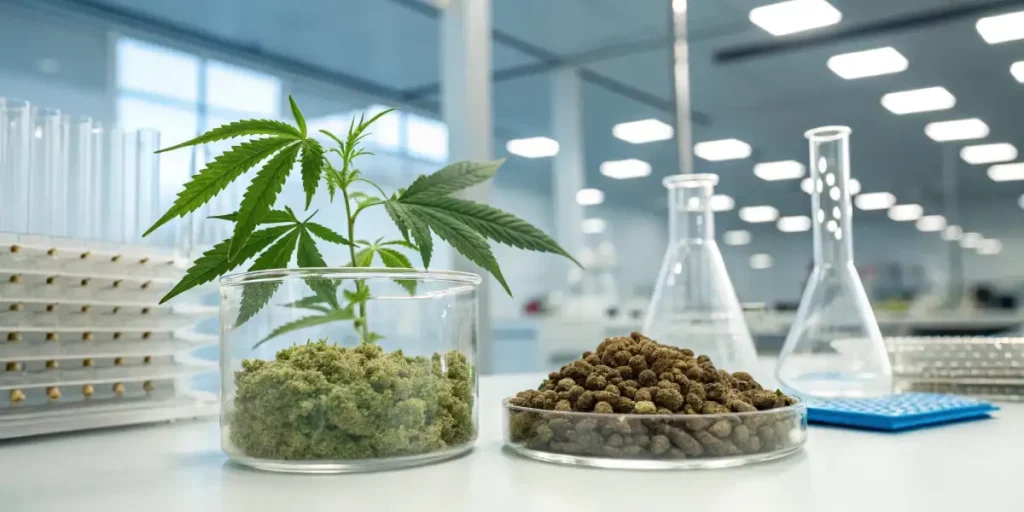
Difference Between Terpenes and Flavonoids
When it comes to the world of cannabis, you might have heard of terms like terpenes and flavonoids. However, you might not know exactly what they are or how they differ. This article will shed light on the difference between terpenes and flavonoids, their role in cannabis plants, their benefits, and how they influence the properties of different cannabis strains.
Terpenes and flavonoids are both primary constituents of many plants, including cannabis. They contribute to the plant’s fragrance, color, flavor, and health benefits. Knowing their roles is key to appreciating the complexity of cannabis and its various strains.
Recommended Strains
Alien Rock Candy
|
|
THC | 15% - 19% (Medium) |
|
|
Type | Feminized |
|
|
Yield | Medium |
|
|
Phenotype | 80% Indica / 20% Sativa |
Alien Technology Fast Version
|
|
THC | 16% - 18% (Medium) |
|
|
Type | Fast Flowering |
|
|
Yield | Medium |
|
|
Phenotype | 90% Indica / 10% Sativa |
Let’s start with terpenes. They are aromatic compounds found in many plants. In cannabis, they are responsible for the distinct aroma of different strains. For example, a strain with a piney smell likely has a high concentration of the terpene called pinene. On the other hand, flavonoids are compounds that contribute to a plant’s color and flavor. They also provide many health benefits.
Knowing the difference between terpenes and flavonoids is an essential step towards a thorough knowledge of cannabis and its medicinal properties. These compounds play a significant role in determining the characteristics of different cannabis strains, and their interaction with other compounds in the plant can significantly affect their effects on the human body.
What Are Terpenes?
Terpenes are volatile organic compounds found in the essential oils of plants. They are responsible for the unique scents of pine, lavender, citrus, and many other plants – including cannabis. In the cannabis plant, terpenes are produced in the sticky resin glands, the same ones that produce THC and CBD, the plant’s main psychoactive components.
Comparing terpenes and flavonoids, terpenes play a significant role in the aroma and flavor of different cannabis strains. They also interact with other compounds in cannabis, influencing the plant’s effects on the body and mind. This interaction, known as the entourage effect, can enhance the plant’s therapeutic properties.
Terpenes are more than just aromatic compounds. They play a critical role in the cannabis plant’s survival, attracting pollinators and repelling predators. Additionally, research has indicated that terpenes may have significant therapeutic potential, contributing to effects such as relaxation, euphoria, and even pain relief.
When exploring the difference between terpenes and flavonoids in cannabis, one should note that terpenes are what give each strain its unique smell and flavor. This is why some strains might smell like lemon or pine, while others have a more earthy aroma. The presence of specific terpenes can also influence a strain’s effects on the body and mind.
Promos & Deals
What Are Flavonoids?
Flavonoids are a group of plant metabolites thought to provide health benefits through cell signaling pathways and antioxidant effects. These molecules are found in a variety of fruits and vegetables. In the cannabis plant, flavonoids contribute to the vivid colors of the plant’s flowers and leaves, from bright green to deep purple.
When it comes to health benefits, terpenes vs flavonoids, flavonoids in cannabis have been found to have anti-inflammatory, anti-cancer, and neuroprotective effects. While more research is needed, these compounds show promise for their potential therapeutic uses.
Flavonoids serve a vital function in plants, contributing to photosynthesis and protecting the plant from environmental stresses. Along with their role in plant health, flavonoids have attracted significant scientific interest for their potential health benefits. Studies have suggested that flavonoids may have a range of effects, including antioxidant, anti-inflammatory, and even anti-cancer properties.
When comparing terpenes and flavonoids in plants, it’s important to note that flavonoids also contribute to the plant’s unique flavors. They are responsible for the bitterness in grapefruit, the sweetness in apples, and the rich, full-bodied flavor of a good red wine. In cannabis, flavonoids can add depth and complexity to the plant’s flavor profile.

Exploring The Differences Between Terpenes And Flavonoids In Cannabis
Now that we know what terpenes and flavonoids are, let’s delve into their differences. While both are found in cannabis and other plants, they have distinct properties and functions. Terpenes primarily contribute to the scent and flavor of cannabis, and they also have therapeutic properties. Flavonoids, on the other hand, are responsible for the plant’s color, contribute to the flavor, and have their own set of health benefits.
Another key aspect is their interaction with other cannabis compounds. Terpenes can interact with cannabinoids like THC and CBD in a way that enhances the plant’s effects, a phenomenon known as the entourage effect. Flavonoids, while also having health benefits, do not affect the plant’s overall effects in the same way.
Knowing their roles can provide valuable insights into the potential health benefits of different cannabis strains. For instance, a high-terpene strain may have more potent effects due to the entourage effect, while a strain rich in flavonoids may offer unique health benefits due to the antioxidant and anti-inflammatory properties of these compounds.
When it comes to the entourage effect, the difference between terpenes and flavonoids is crucial. Terpenes can modulate the effects of cannabinoids, potentially enhancing their therapeutic effects. On the other hand, while flavonoids have been shown to have numerous health benefits, their role in the entourage effect is less clear.
Cannabis Strains and Their Terpene and Flavonoid Profiles
Different cannabis strains have different terpene and flavonoid profiles, which contribute to their distinct characteristics. For instance, the Diesel strain from Blimburn Seeds is rich in terpenes that give it a unique flavor and aroma, with notes of fruit, oil, and pepper. On the other hand, Mamba Negra is a strain that has a high flavonoid content, contributing to its deep purple color.
The Gelato strain, also from Blimburn Seeds, is another example of a strain with a rich terpene and flavonoid profile. It has a sweet and fruity aroma, thanks to its terpenes, and its vibrant colors are due to its flavonoids.
Knowing the terpene and flavonoid profiles of different cannabis strains can help consumers make informed choices about which strains to use. For example, someone looking for a calming and relaxing effect might choose a strain high in the terpene myrcene, which is known for its sedative effects. Conversely, a person seeking to reduce inflammation might choose a strain rich in the flavonoid cannflavin A, which has been found to have potent anti-inflammatory properties.
When it comes to the difference between terpenes and flavonoids in cannabis, each strain has a unique combination that contributes to its effects, flavor, and aroma. This is why knowing the terpene and flavonoid profiles of different strains can help you find the perfect strain for your needs.

FAQs
What Is The Difference Between Terpenes And Flavonoids?
Terpenes and flavonoids are both naturally occurring compounds found in cannabis and other plants. The primary difference lies in their functions. Terpenes are responsible for the unique aroma and flavor of different cannabis strains and have therapeutic properties. They can also enhance the effects of other cannabis compounds through the entourage effect.
Flavonoids, on the other hand, contribute to the plant’s color and flavor. They have been found to have anti-inflammatory, anti-cancer, and neuroprotective effects. However, unlike terpenes, flavonoids don’t enhance the effects of other cannabis compounds to the same extent.
When considering terpenes and flavonoids, it’s worth noting that these compounds are not exclusive to cannabis. They are found in a wide variety of plants, where they perform a range of functions from attracting pollinators to protecting the plant from harmful UV radiation. In humans, both terpenes and flavonoids have been studied for their potential therapeutic benefits.
What is the difference between terpenes and flavonoids in cannabis? Terpenes are primarily responsible for the scent and flavor of different strains and can interact with other cannabis compounds to enhance their effects. Flavonoids, on the other hand, contribute to the plant’s color and have been found to have a range of health benefits, including anti-inflammatory, anti-cancer, and neuroprotective effects.
Can You Smell Terpenes?
Yes, you can smell terpenes. They are the compounds responsible for the unique scents of many plants, including cannabis. The distinct aroma of different cannabis strains, from fruity and sweet to earthy and piney, is due to their terpene profiles. So next time you smell a cannabis strain, remember that you’re smelling its terpenes.
Flavonoids, on the other hand, don’t contribute to the aroma of cannabis. However, they do contribute to the plant’s flavor, so they play a part in the overall sensory experience of consuming cannabis.
It’s interesting to note that the aromatic properties of terpenes are not only pleasing to our senses but also play a crucial role in the survival of the plants they are found in. By emitting specific scents, terpenes can attract certain insects for pollination while deterring others that may be harmful to the plant. This highlights the complexity and importance of these compounds in nature.
While flavonoids do not contribute to the aroma of cannabis, they are essential for the plant’s color, which can range from green to purple, and even blue. This coloration can affect the plant’s attractiveness to pollinators, further emphasizing the crucial role of flavonoids in the plant’s survival and propagation.
Do Terpenes Get You High?
Terpenes themselves do not get you high. The psychoactive effects of cannabis are primarily due to THC, a cannabinoid. However, terpenes can influence the effects of THC and other cannabinoids. This interaction, known as the entourage effect, can modify the high, making it more calming, uplifting, or balanced, depending on the terpene profile of the strain.
Flavonoids also do not get you high. Like terpenes, they have their own set of health benefits, but they do not interact with THC or other cannabinoids in a way that alters the psychoactive effects of cannabis.
While terpenes can alter the effects of THC and other cannabinoids, they do not produce a high on their own. They can, however, contribute to the overall sensory experience of using cannabis by adding distinct flavors and aromas. So, while terpenes may not get you high, they contribute significantly to the cannabis experience.
Similarly, flavonoids do not induce a high. They do, however, play a crucial role in the health benefits of cannabis. Numerous studies have indicated that flavonoids may have anti-inflammatory, anti-cancer, and neuroprotective effects, making them a crucial component of the therapeutic potential of cannabis.
How Do Terpenes Impact Flavor?
Terpenes have a significant impact on the flavor of cannabis. They are responsible for the diverse range of flavors found in different cannabis strains, from citrus and berry to diesel and cheese. When you taste a particular flavor in cannabis, it’s likely due to the strain’s terpene profile.
Flavonoids also contribute to the flavor of cannabis, though not to the same extent as terpenes. However, they play a more prominent role in determining the plant’s color.
The influence of terpenes in shaping the flavor of cannabis cannot be overstated. Each terpene has a distinct flavor profile, and the combination of these terpenes in a particular strain creates its unique flavor. For instance, the terpene limonene imparts a citrus flavor, while myrcene provides a more earthy taste.
Although flavonoids are not as influential in shaping the flavor of cannabis as terpenes, they do contribute to the overall sensory experience of using cannabis. Flavonoids are responsible for many of the subtle notes and undertones in the flavor of cannabis, adding depth and complexity to the plant’s taste.
Are Terpenes and Flavonoids Found In Other Plants?
Yes, both terpenes and flavonoids are found in many other plants besides cannabis. Terpenes are found in many herbs, fruits, and flowers, and they give these plants their unique scents. Essential oils, for example, are rich in terpenes.
Flavonoids, too, are found in a wide variety of fruits and vegetables. They are responsible for the vivid colors of many plants and have been found to have numerous health benefits. So whether you’re enjoying cannabis or a bowl of fruit, you’re experiencing the wonders of terpenes and flavonoids.
From the refreshing scent of a pine forest to the comforting aroma of lavender, terpenes are all around us. They’re in the citrusy scent of oranges, the spicy aroma of cloves, and many other familiar smells. The same terpenes that contribute to these scents can also be found in cannabis, contributing to the plant’s unique aromatic profile.
Flavonoids are equally ubiquitous in the plant kingdom. They’re responsible for the bright red color of apples, the deep blue of blueberries, and the vibrant orange of carrots. Just like with terpenes, the same flavonoids that contribute to these colors can also be found in cannabis, adding to the plant’s visual appeal.


